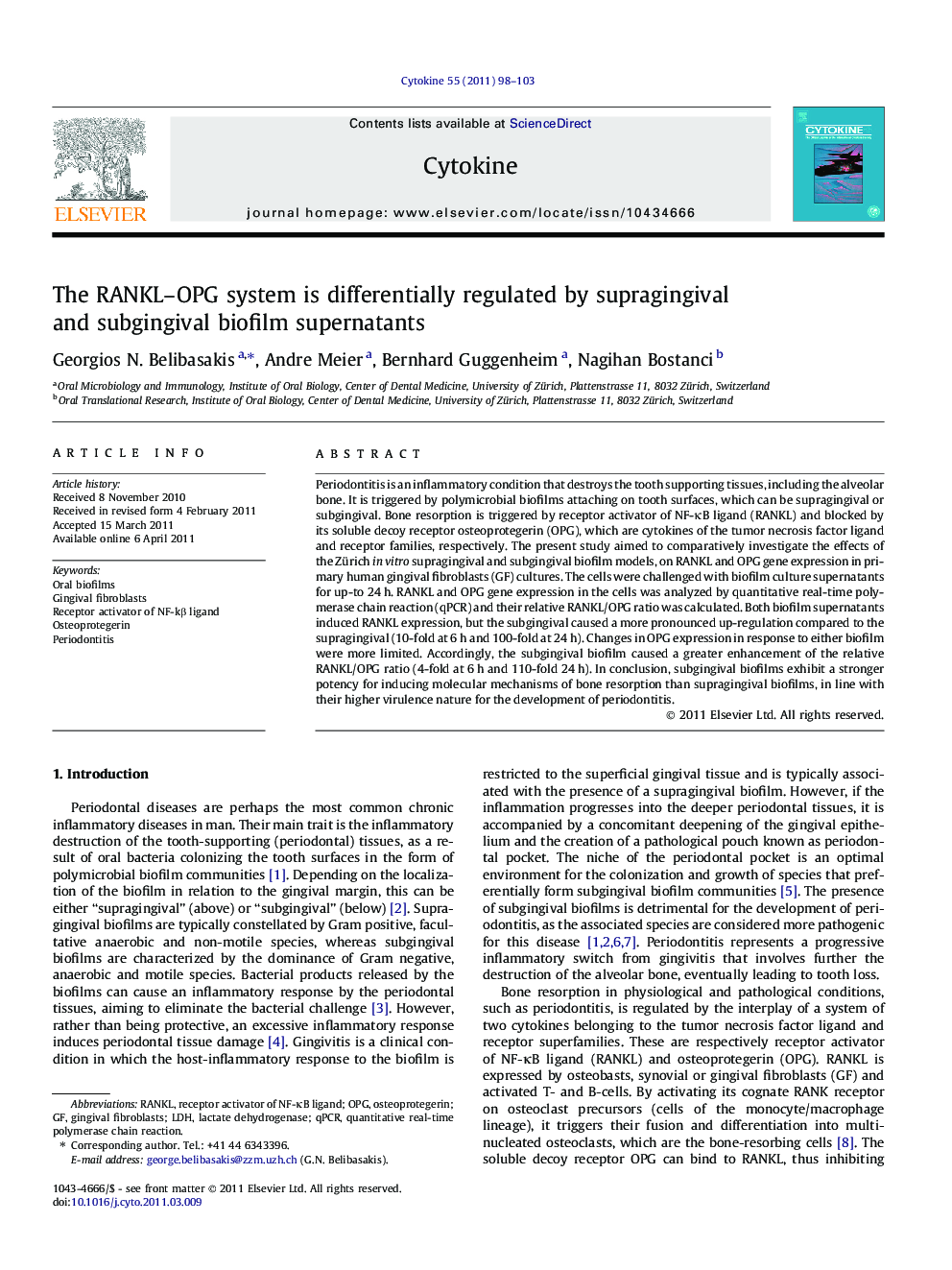| Article ID | Journal | Published Year | Pages | File Type |
|---|---|---|---|---|
| 2794673 | Cytokine | 2011 | 6 Pages |
Periodontitis is an inflammatory condition that destroys the tooth supporting tissues, including the alveolar bone. It is triggered by polymicrobial biofilms attaching on tooth surfaces, which can be supragingival or subgingival. Bone resorption is triggered by receptor activator of NF-κB ligand (RANKL) and blocked by its soluble decoy receptor osteoprotegerin (OPG), which are cytokines of the tumor necrosis factor ligand and receptor families, respectively. The present study aimed to comparatively investigate the effects of the Zürich in vitro supragingival and subgingival biofilm models, on RANKL and OPG gene expression in primary human gingival fibroblasts (GF) cultures. The cells were challenged with biofilm culture supernatants for up-to 24 h. RANKL and OPG gene expression in the cells was analyzed by quantitative real-time polymerase chain reaction (qPCR) and their relative RANKL/OPG ratio was calculated. Both biofilm supernatants induced RANKL expression, but the subgingival caused a more pronounced up-regulation compared to the supragingival (10-fold at 6 h and 100-fold at 24 h). Changes in OPG expression in response to either biofilm were more limited. Accordingly, the subgingival biofilm caused a greater enhancement of the relative RANKL/OPG ratio (4-fold at 6 h and 110-fold 24 h). In conclusion, subgingival biofilms exhibit a stronger potency for inducing molecular mechanisms of bone resorption than supragingival biofilms, in line with their higher virulence nature for the development of periodontitis.
